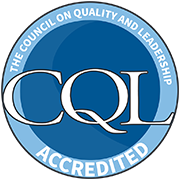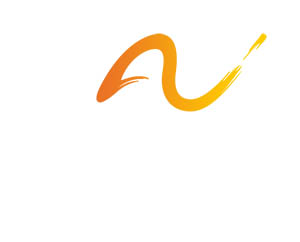This is the second of a two-part series that The Arc@Work
will publish this month to speak on the new and emerging challenges faced by
workers with IDD and how employers, disability services agencies, and
individuals with intellectual and developmental disabilities (IDD) can work
together on creating solutions that create inclusion and workplace equity.
In the
first part of this blog series, we discussed how hard the disability labor
force has been hit by the pandemic and the various barriers that now face these
individuals as they look for work. At the same time, the fact that many
companies have had to either temporarily or permanently cut staff as a result
of COVID-19, which means that employers will be hiring as the economy begins
its slow climb back up to its pre-pandemic levels. Now is the perfect time for
employers to assess where they stand in their disability inclusive culture and
recruiting strategies. Below is a list of considerations and strategies that
employers can consider to mainstream disability-inclusion in rebuilding their
staff.
Make your online job application accessible. One of
the first barriers that many job candidates encounter in the process is an
inaccessible online job application process. Web accessibility is a growing
field and there are now several
resources for web developers to use to learn how to develop accessible job
descriptions and webpages and test their accessibility after the fact.
Accessible job descriptions are screen reader compatible, are in plain language
and use the The World Wide Web Consortium’s Web Content Accessibility
Guidelines 2.1.
Cut out limiting language from your job description. Are
all the stated job functions essential to performing the job?Have you
ever put a physical requirement on a job, like being “able to lift 40 lbs
repeatedly” or “needs to be able to stand for long periods of time”, but
neither were actual requirements for the job? While these functions are sometimes
included in boilerplate or standard job description language, these are also
very real barriers for some applicants with disabilities. You must take a
moment to identify and separate out the essential functions of the job from the
non-essential functions of the job prior to beginning your recruiting efforts.
You will then better be able to convey which parts of the job are actual versus
desired skills and capabilities. Your business may be missing out on top talent
by using standardized job description language that doesn’t actually apply to
the position in question. Make sure that your job descriptions do not use
limiting language or include physical “requirements” that are not appropriate
for the job.
In the same vein, it is also important not to list having a
valid driver’s license as a job requirement if driving is not an essential part
of the job. Some individuals with disabilities are either unable to drive or do
not have a valid driver’s license and either take public transportation to work
or are driven by a family member or caregiver. It is important not to limit
individuals by listing this as a requirement unless driving is an absolutely
necessary part of the job.
Your job description should also state that individuals with
disabilities are encouraged to apply and reasonable accommodations will be
provided. This will not only be reassuring for prospective applicants with
disabilities, but using these terms in your job description will also help your
job application show up among the top results in a search on popular job boards
like Indeed or Idealist.
Ensure that your interview process is equitable and
accessible to people of all abilities and communication styles. Many
recruiters and HR professionals subscribe to a standardized approach to recruiting
and interviewing job candidates for open positions. For hourly positions, this
may take the form of an initial phone screen interview followed by an in-person
or virtual interview. The phone interview is where many people who communicate
differently, have a processing delay or a cognitive disability, or are deaf or
hard of hearing may encounter barriers. Interviewers who take dozens of phone
screening calls a day may get the impression that a person who speaks or
communicates differently may be doing so out of disinterest in the job. This,
in turn, can cost a candidate with a disability a fair shot at employment. One
of the small ways to accommodate job candidates with disabilities is by
offering alternative formats for interviews. Recruiters can offer a phone
screen as a default option but also offer to either connect via a
teleconferencing platform or an in-person interview based on an individual’s
preferences and strengths.
Be intentional about recruiting individuals with
disabilities. It is important for employers to remember that maintaining
a diverse workforce creates competitive advantages and positively impacts the
bottom line in the long-term. This is especially true for new or reopening
businesses: committing to inclusive hiring from the outset and establishing
your brand as an inclusive employer in your community will boost your brand
among your target consumers. In order to reach and provide a bridge for job
seekers with disabilities, recruiters should seek out the support of local disability
service agencies to identify and recruit qualified job seekers. Partnering
with these agencies can also inform an employer’s approach to making sure that
new hires abide by OSSHA COVID-10 safety protocols at work.
Follow local government and OSHA guidelines for safety
but allow for flexibility. It’s critically important that all employees
feel safe enough to return to work. Employers should continue to follow the
work safety guidelines provided by OSHA and the CDC as they reopen to guarantee
employee well-being.
It is also important to ensure that employees are able to
meet those standards and are not adversely impacted (such as individuals with
sensory difficulties, individuals who have social awareness difficulties, and
others). Speak to your employees that may have issues meeting these safety
requirements and think creatively on alternatives to these protocols that
better suit people with disabilities. For example: if an individual has trouble
wearing standard issued masks with thick fabric, help them find an alternative
mask that better suits their needs. If an employee has trouble with social
distancing, place them in a role that requires less customer interface.
Make remote work a standard option—even after COVID
stay-at-home restrictions are lifted. One of the few positives that have
emerged from the pandemic is popularization of remote work as an alternative to
in-person work. Numerous articles have emerged since the pandemic began on how
remote work has become a boon for workers with disabilities because of the
absence of commuting (primary barrier) and the built-in accommodations in the
individual’s home.
There is a
case of a tech company that has at least two hundred individuals with autism
on staff whose CEO has said that remote work has actually improved productivity
and communication among staff. The remote work option, though, is only
available to individuals whose job requirements can be met via remote work. Not
all individuals have this opportunity.
Staying connected and encouraging the feedback loop. Another key success that has emerged from an increasingly remote workforce has been the emergence of alternative modes of communication that employees and managers can use to stay connected. Watercooler conversations have been replaced with tools like Slack, which have been traditionally used in the tech industry. In-person meetings are now taking place over Zoom, Webex, or Microsoft Teams—the latter of which has built-in accessibility features such as AI generated live captioning. Training is key for everyone to access these platforms.
Improve digital accessibility. While remote work is a
great accommodation, it is also important to guarantee access and participation
of employees with disabilities in the company’s virtual spaces and meetings.
Employers should make sure that virtual meetings are accessible (closed
captions, ASL interpreters, recording meetings when possible, providing written
materials before meetings and summaries after, etc.) and should invest in
making shared documents and spaces accessible as well.
The Arc@Work works with public and private sector
companies to either create disability-inclusive hiring programs or build upon
existing initiatives. Through our work, we’ve placed more than 1000 individuals
with disabilities into jobs at a 97% retention rate. We’ve also supported more
than 500 businesses become more disability-inclusive. Wherever your company
might be in your disability inclusion journey, we’re here to help. Contact us
to set up a free consultation now.


















